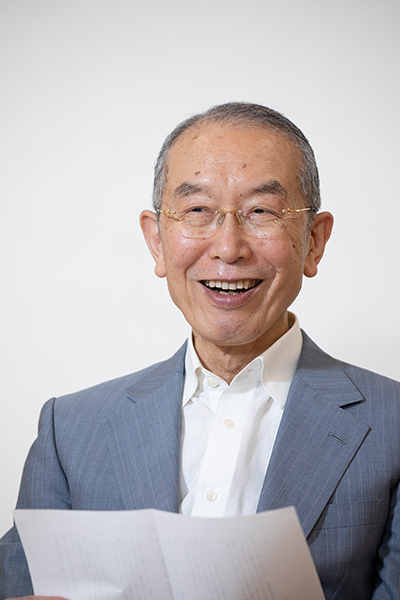Our Lives and Eternal Life
July 2024

Life Is a Relay Race
For decades, the Rinzai sect priest Taido Matsubara (1907–2009) continued expounding the Buddha’s teachings in a simple, easy-to-understand manner. On the occasion of his beiju (eighty-eighth birthday, according to the traditional way of counting years), he composed this poem:
“For more than eighty years, / My deceased mother has led me by the hand, / Over mountains and across rivers, / To be blessed with this day.”
In a lecture in honor of the Ullambana Festival, Rev. Matsubara added a few sentences to this poem, which unreservedly express his feelings of longing for and gratitude toward his mother: “Thank you, Mother. Thank you for causing me to live, hearty and hale, down to the present year.”
Next year, I will be the same age as Rev. Matsubara was when he wrote this poem, and especially when the Ullambana season comes, I will surely not be the only one who feels all the more keenly such emotions as he expressed for a deceased parent.
I also remember the following passage from one of Rev. Matsubara’s books:
“Life is like a relay race that has no finish line. Human beings live and die, as runners in this relay race of life, which has continued for billions of years. We run as fast as we can, and then we pass the baton to the next runner” (Matsubara Taido no seppo jinsei [Taido Matsubara’s life of teaching the Dharma], Kosei Publishing, 2004).
All things that receive life must someday face death. We tend to think of the moment when our lives end as “the finish line of life.” However, Rev. Matsubara said that life is a relay without a finish line.
I feel an indescribable sense of peacefulness in this passage that helps us understand that even though we will face death, it is not the finish line of life. In each of our lives, we run a different distance and in a different manner, but we are all relay runners who run as fast as we can through one section of the functioning of one great life force so that the baton of life will continue to be passed on forever. And when you accept this interpretation, you feel refreshed and invigorated.
We Are Living Eternal Life
Professor Ko Hirasawa (1900–89), who served as president of Kyoto University, presents a more concrete view of the vitality in which life has been functioning for billions of years.
“Death is when life, given by nature, returns to its original source, changes back to being a part of nature, and once again takes part in the construction of nature. Death is not life changing into ‘nothingness,’ it is life participating in the emergence of new nature” (Ikiyo, kyo mo yorokonde [Live with joy again today], Chichi Publishing, 1995).
These words of Dr. Hirasawa do not give even the slightest impression of loneliness or sadness in facing death. On the contrary, they present us with a magnificent panorama, spreading out before us, of our lives going home at the moment of death, like joining a great river that continues flowing from the past to the future, returning to nature, and continuing to live as eternal life.
Many people feel increasing anxiety and fear as death finally comes for them. It seems that some people cannot bear to think of such things as they themselves disappearing from this world. Indeed, Shakyamuni’s search for the true Dharma was motivated by his desire to liberate all people from the sufferings of birth, aging, illness, and death, so we could even say that wanting to avoid death is a natural impulse. Later on, however, Shakyamuni expounded and transmitted teachings by which we human beings can overcome such sufferings and anxiety, in the form of the Four Noble Truths and the Eightfold Path, which are principles based on truths including impermanence—in other words, everyone will be liberated by learning to accept suffering and practicing the virtues of these teachings. Actually though, as we know from the Parable of the Mustard Seeds, Kisa Gotami, who lost her young child, had an encounter with Shakyamuni that led to her awakening, after which she herself stated: “I have practiced the noble Way consisting of eight methods of Dharma practice, [the Way] leading to immortality. I have truly awakened to real peace of mind and looked into the mirror of the true Dharma.”
What interests me in Kisa Gotami’s statement is the word “immortality.” In the Sutta Nipata, Shakyamuni says that people who cultivate their minds are rewarded with immortality, but what does “immortality” mean? In the next issue, I would like to give some consideration to immortality as one of the clues for how we, who in reality must face death, can live our daily lives with peace of mind.



